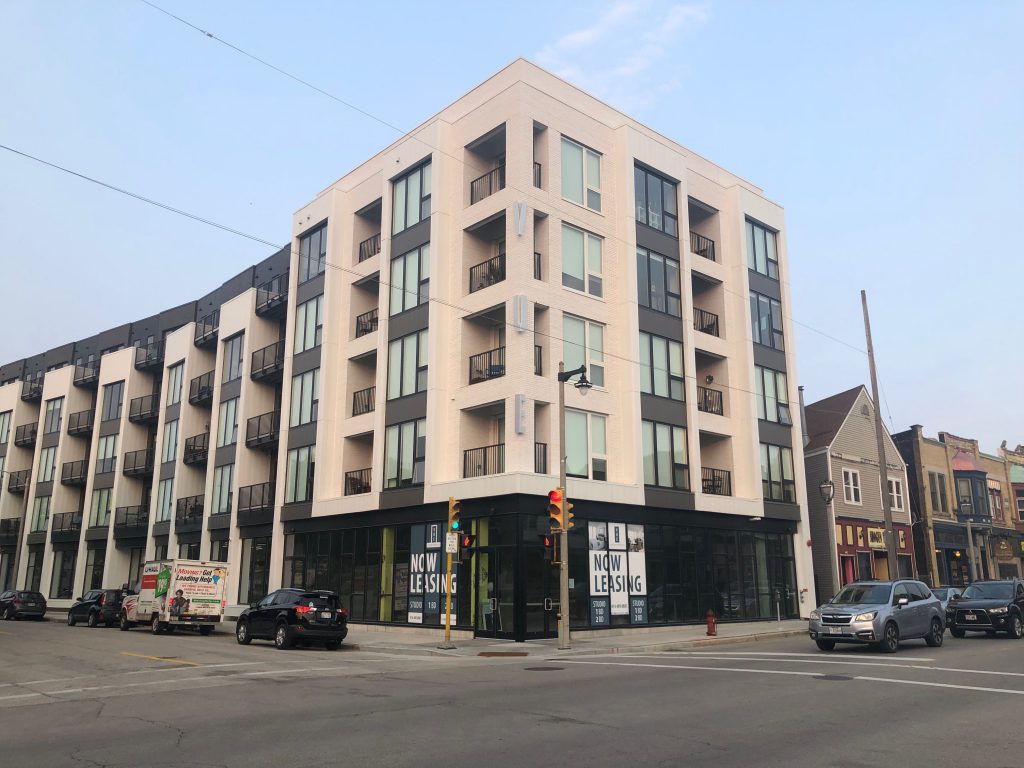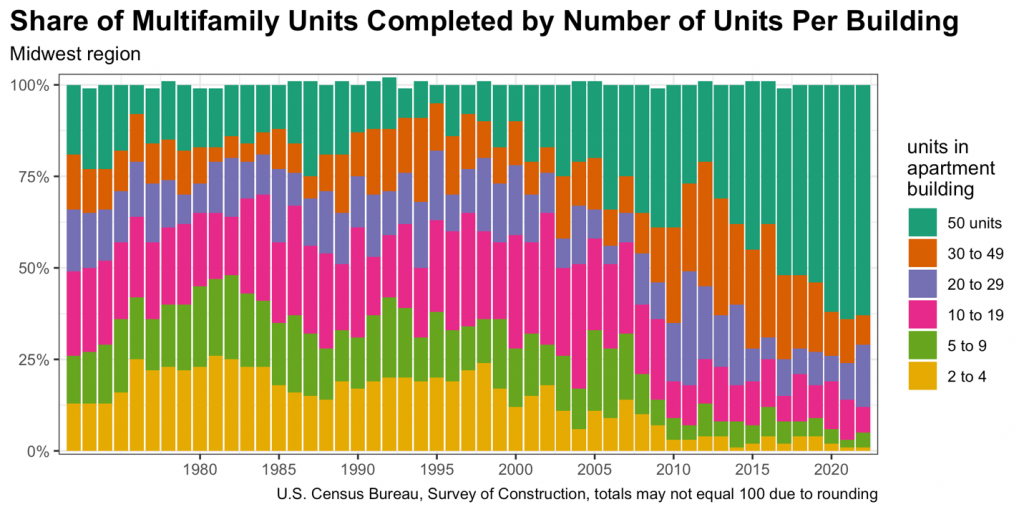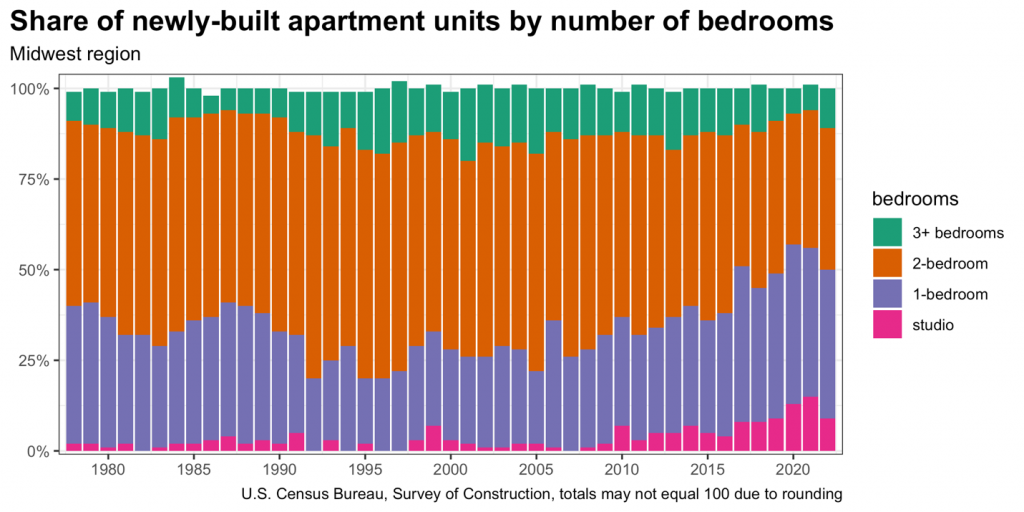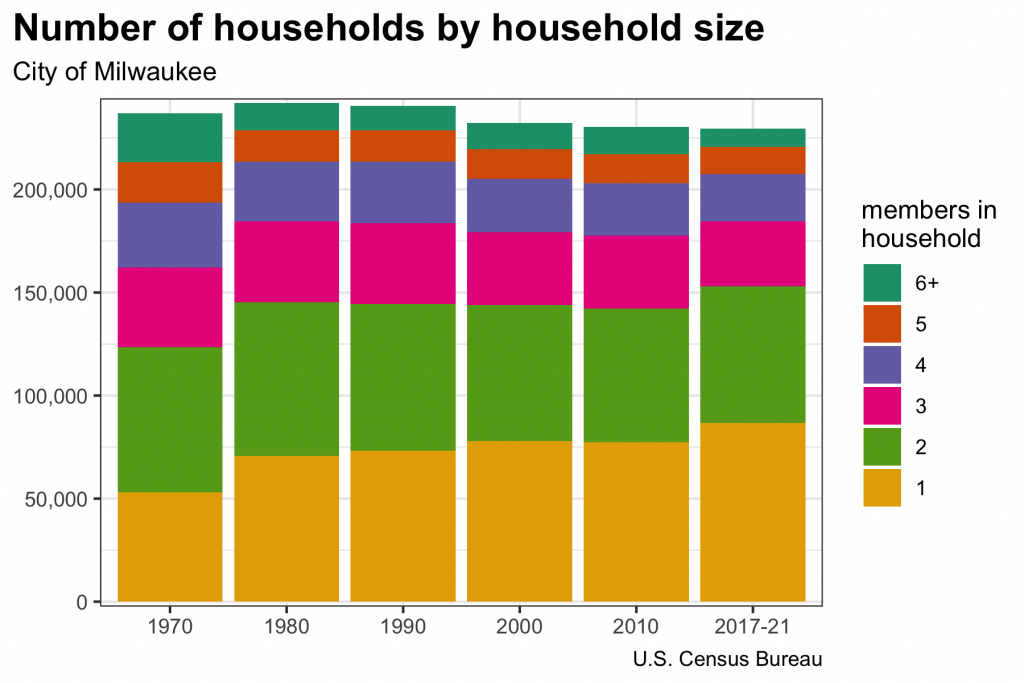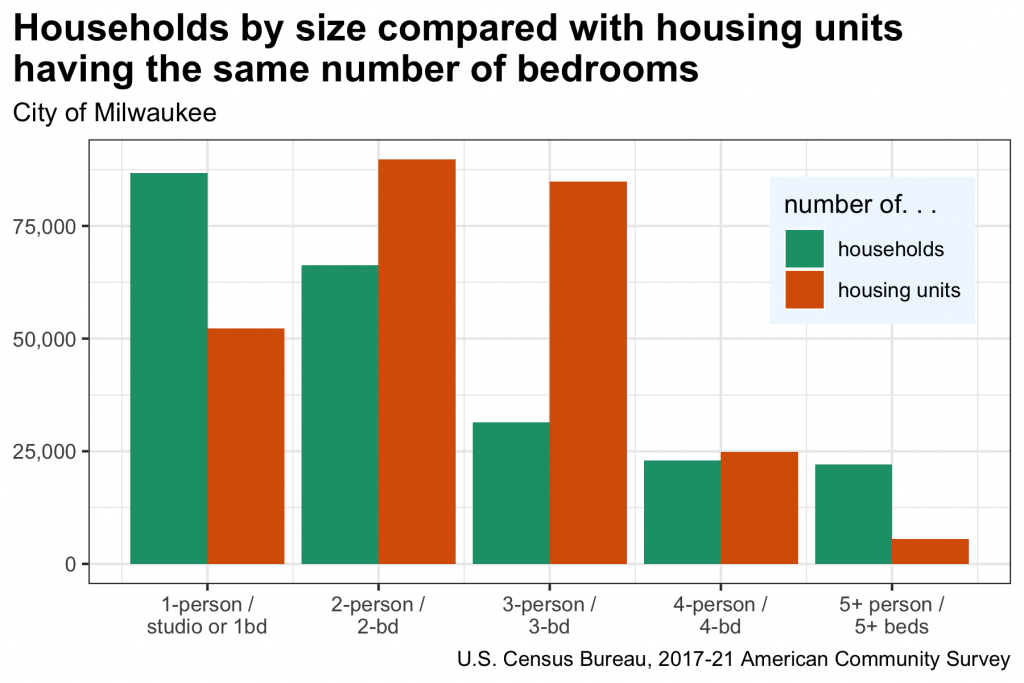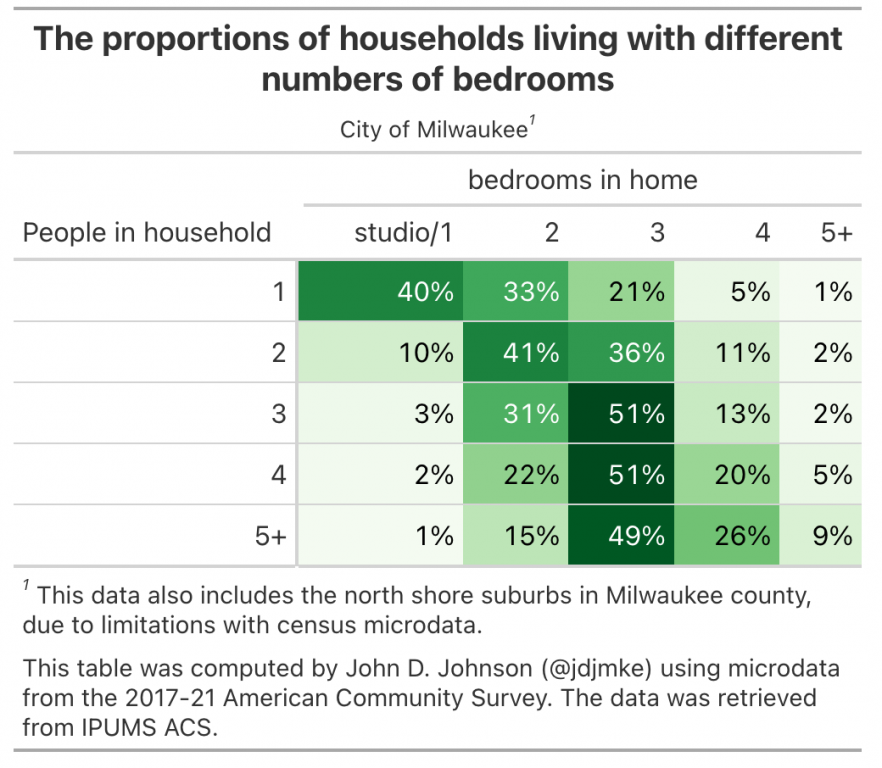Despite Building Boom, Milwaukee Still Needs More 1-Bedroom Apartments
Milwaukee's population features a growing number of one-person households.
New apartment construction in American cities tends toward large buildings with small units, leaving fewer new options for households with more than two members.
Complaints abound about the lack of apartments suitable for a family with kids. In Milwaukee, I often hear questions like, “Who is going to live in these?” and “Where will families go?”
Surely, not all these one-person households will want to live in a small unit, but judging by current dwelling behavior, many clearly do. The growing gap between potential residents of small units and available inventory is larger than that for any other market segment.
Bigger buildings, smaller units
The next two graphs show annual construction statistics for the Midwest. In 2022, 63% of new apartment units came from buildings of at least 50 units, compared to just 21% in 2005. Apartment buildings with two to four units are hardly built anymore. They contributed just 1% of new apartments last year, down from 11% in 2005. Likewise, small apartment buildings with five to nine units contributed 22% of new units in 2005 and just 4% in 2022.
As apartment buildings have grown larger, units have grown smaller by every measure. Seventy-eight percent of apartments built in 2005 contained at least two bedrooms, falling to 50% in 2022.
From 2000-2009, studio apartments made up about 1.5% of annual apartment construction. During the first three years of the 2020s, studios comprised 12.3% of new construction.
In 2005, 28% of new apartments were under 1,000 square feet and 10% were 1,800 square feet or larger. In 2022, 51% of new units were under 1,000 square feet and just 2% were at least 1,800 square feet.
Growing demand for small units
Often, reasons for this dearth of “family-sized” apartments are given from the supply side. Zoning codes often make it hard to build the kinds of small apartment buildings that would fit in residential neighborhoods. Where room allows, bigger buildings are both more profitable. U.S. fire codes require large apartment buildings to be built around a central hallway. These “double-loaded” floor plans limit the number of multi-bedroom apartment units common elsewhere.
Even as Milwaukee’s population has fallen over the past 50 years, the number of households (or occupied housing units) has remained stable due to the growing number of people living by themselves.
Just over the past decade, the city added 9,300 one-person households and 1,500 two-person households, while losing 11,500 households with three or more members.
Milwaukee’s housing stock has, overall, not caught up to these changes.
Recent census estimates count about 87,000 single-member households in Milwaukee, compared with an available supply of 52,000 studio or one-bedroom apartments.
In sharp contrast, Milwaukee holds 23,000 more two-unit dwellings than two-person households and 53,000 more three-unit dwellings than three-person households. Four-person households are closely matched to the number of four-bedroom homes, and the number of households with five or more members (though shrinking) still outstrips the number of five-plus bedroom houses by about 16,000.
Of course, households do not match house sizes in the neat way those numbers suggest. Children in large families have always shared bedrooms and small households sometimes want more space. As I began writing this piece, I wondered if the relationship might run in reverse. Perhaps parents have less money to spend, and so wind up in smaller houses, while couples without children might be able to afford the largest houses.
As it turns out, this is not the case. Within the constraints of Milwaukee’s housing supply, people generally wind up choosing homes that closely match their household size.
Forty percent of one-person households live in either a studio or a one-bedroom apartment. Another third live in a two-bedroom unit. The model two-person household lives in a two-bedroom unit (41%), and just over half of three-person households also live in a three-bedroom home.
More of a mismatch exists for larger families, those with four or more members. Half of four-member households live in a three-bedroom house, a quarter have four or more bedrooms, and another quarter live somewhere with fewer than three.
Among households with five or more people, just 9% live in a house with five or more bedrooms, reflecting the lack of supply in this category. Large families are still the most likely group to live in one of these uncommonly large houses.
In a city like Milwaukee, with little available land for new construction, it comes as no surprise that most new construction is tailored to the only market segment with significant growth—adults without kids, usually living alone. Three-bedroom units abound, albeit primarily in the aging housing stock.
The big challenge for builders and policymakers will be figuring out how to build enough smaller units that are appealing and affordable to the growing numbers single-member households. The large apartment buildings that dominate the current construction landscape are an important part of that. Milwaukee also needs to advance strategies like accessory dwelling units and corner quadplexes that accommodate shrinking household sizes in popular, already built-out residential neighborhoods.
John Johnson is a Research Fellow at the Lubar Center for Public Policy Research and Civic Education at the Marquette Law School. His work focuses on housing, demographic, and political trends in Wisconsin and the Milwaukee metro area.
Data Note: The Census Bureau does not publish a table counting households by members and bedrooms, so I computed this data from the most recent batch of census microdata. Due to limitations with the dataset, these statistics include Milwaukee County’s north shore suburbs. Additional statistics are drawn from the 2017-2021 American Community Survey (ACS), the 2008-2012 ACS, decennial censuses from previous years and the Survey on Construction.


